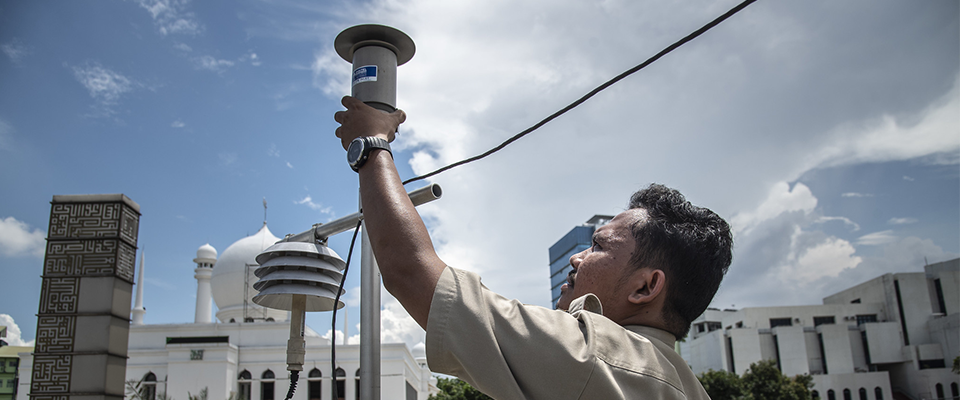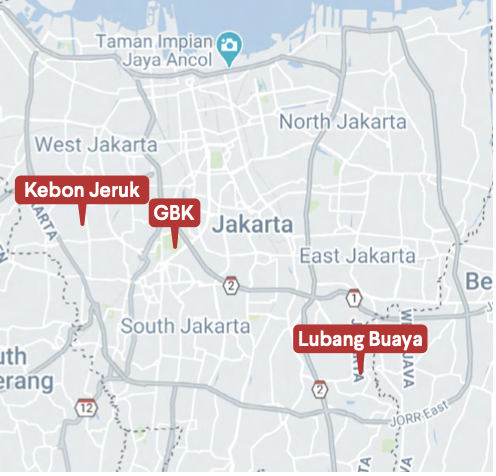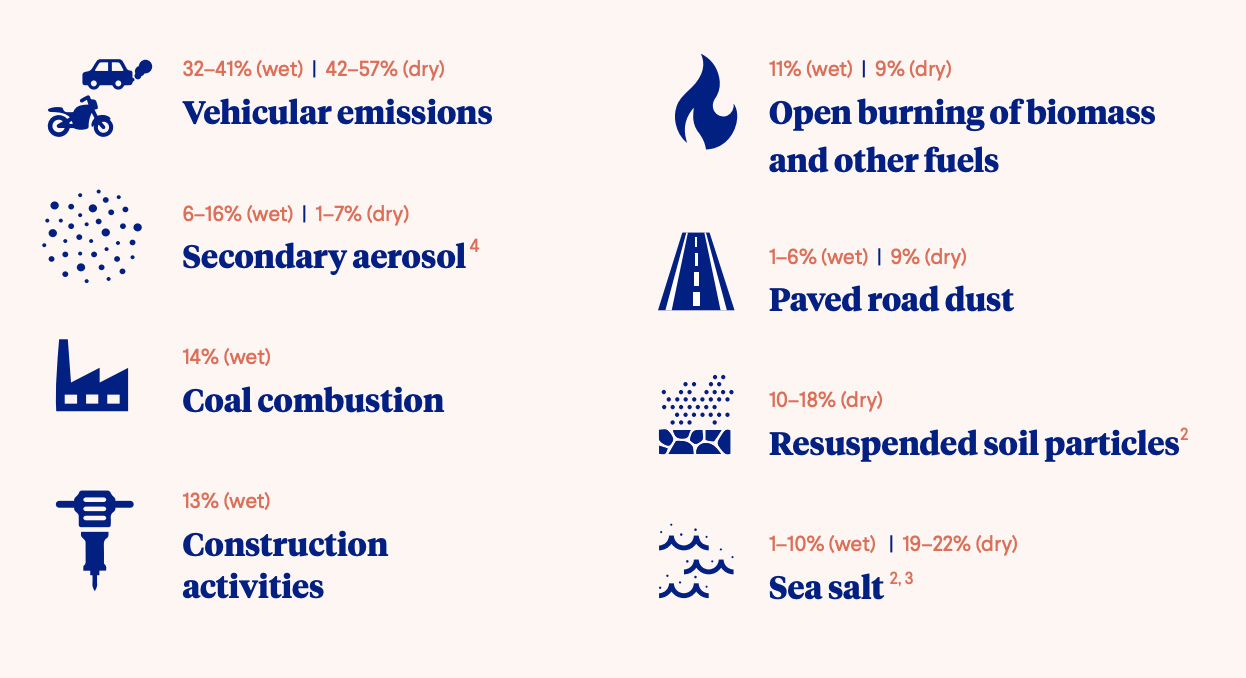
There are two approaches to identify sources of pollution: a source-based approach using an emission inventory and a receptor-based approach using an air filter sample to chemically characterize the sources that contribute to air pollution or often referred to as source apportionment.
Throughout 2019 to 2020, Vital Strategies in collaboration with the Bandung Institute of Technology (ITB) and the DKI Jakarta Provincial Government conducted research to find sources of pollution using a receptor-based approach and collected samples to calculate the contribution of PM2.5 in two seasons, namely the rainy and dry seasons. . This sample collection was carried out in three locations, namely at Gelora Bung Karno (GBK), Kebon Jeruk (KJ) and Lubang Buaya (LB).

The transportation sector is the main contributor of PM2.5 pollutants
This study found that from the three sample collection locations, the largest pollutant contributor for PM2.5 in Jakarta was from the transportation sector, specifically 32-41% in the rainy season and 42-57% in the dry season. The salient finding of this study is the presence of traces of coal-burning contained in PM2.5 pollutants in Jakarta by 14% for sample collection in Lubang Buaya, especially in the rainy season.
In addition, construction activities were also found in the rainy season in Kebon Jeruk by 13%. Open burning was also one of the main sources found in the rainy season in the Kebon Jeruk and Lubang Buaya sample collection at 11% and 9% in the dry season at Lubang Buaya. Open burning usually comes from burning waste in open spaces and burning from agricultural activities.

Way forward
Based on these findings, Vital Strategies and ITB recommend implementing proven solutions to address the emission sources identified through this source sharing study. For example, limiting exhaust emissions from vehicle exhaust, reducing the burning of coal from both industry and power plants, enforcing a ban on open burning, and controlling construction dust, asphalt road dust, and open ground.
The results of this receptor-based source sharing study indicate that there are many major sources of ambient PM2.5 pollution in and around Jakarta. In the future, it is suggested that the research undertaken could include a source-based approach that includes an emission inventory and modelling analysis for the Greater Jakarta Area, as well as a receptor-based approach with more specific marker types (e.g. molecular markers that can more effectively identify sources such as coal) and the use of datasets. the greater one. The findings can better guide various stakeholders including researchers and policymakers in implementing pollution reduction policies in the targeted sector or region.
To read more about this research, visit the following link.
Related tags: